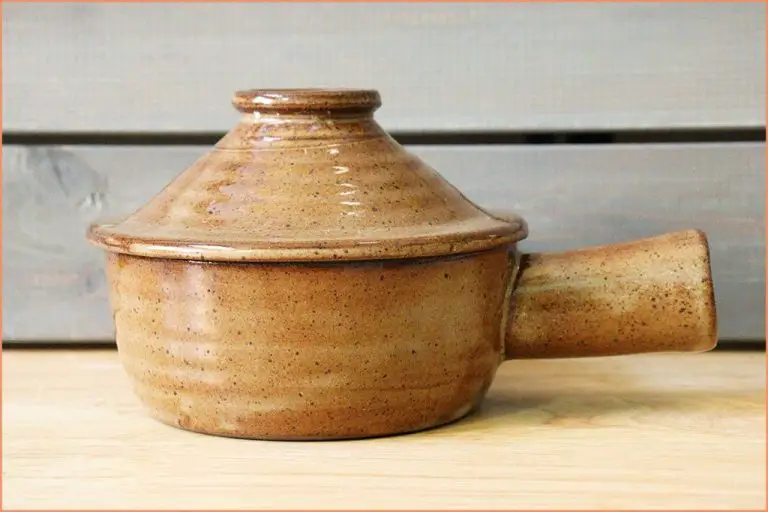How Do I Make My Clay Soil More Acidic?
What is soil pH and why does it matter?
Soil pH is a measure of the acidity or alkalinity of soil. It is measured on a scale of 1-14, with 7 being neutral. Readings below 7 indicate acidic soil, while readings above 7 indicate alkaline soil. The ideal soil pH for most plants is between 6.0-7.0, as this range provides optimal nutrient availability for roots to absorb what they need for growth and development.
Acidic soils have a higher concentration of hydrogen ions, which can increase the availability of some minerals but make others less available. Alkaline soils have more hydroxide ions, producing the opposite effect. Most plants cannot access nutrients effectively if the soil pH is too far outside the ideal range. For example, iron deficiency is common in alkaline soils. Going too far in either direction can also introduce toxic elements like aluminum and manganese when the pH is very low.
Testing and adjusting the soil pH if needed allows gardeners and growers to optimize conditions for plant health. Matching a plant’s preferred pH range helps it take up essential nutrients from the soil. Monitoring and amending pH over time continues to provide the right balance for optimal growth and yields.
How to Test Your Soil’s pH
Testing your soil’s pH is important to determine if it needs to be adjusted. There are a couple of options for testing your soil:
Soil Testing Kits
You can purchase an inexpensive soil testing kit online or from your local garden center. These test kits come with instructions and materials for collecting a soil sample, adding an indicator solution, and comparing the color result to a chart that estimates the pH level. Soil testing kits provide a quick and easy way to get a general sense of your soil’s acidity level.
Send Sample to Lab for Analysis
For the most accurate result, you can send a soil sample to a lab for professional testing and analysis. The lab will precisely measure the pH along with nutrient levels and composition. While sending your sample to a lab costs more than a home test kit, you’ll get an in-depth report on your soil’s pH and other aspects to help inform your gardening.
Reasons for wanting more acidic soil
There are two main reasons why you may want to make your soil more acidic:
Helps certain plants thrive
Many plants prefer slightly acidic soil, with a pH between 6.0 and 6.5. These include azaleas, rhododendrons, blueberries, potatoes and more. Acidic soil provides optimal conditions for these acid-loving plants to absorb nutrients like iron, manganese and zinc from the soil. It allows them to thrive and produce quality blooms, fruit or vegetables. Adjusting the pH for this reason can make a big difference in plant health and productivity.
Adjusts for alkaline water
If your water supply is alkaline with a pH around 8 or higher, each time you water your plants it will raise the soil pH. This makes it difficult for acid-loving plants to thrive. Lowering the soil pH helps counteract the alkalinity of the water so your plants get the proper conditions. You may need to periodically re-acidify the soil after watering to maintain your target pH. Testing the water and soil pH regularly allows you to make informed adjustments.
Making Soil More Acidic

There are a few effective methods for lowering soil pH to make it more acidic:
Adding Elemental Sulfur
One of the most common ways to increase soil acidity is by adding elemental sulfur. Sulfur undergoes a chemical reaction when mixed into the soil, forming sulfuric acid which lowers the pH 1. The amount needed depends on the soil’s buffering capacity. For moderately buffered soils, add 1 lb of sulfur per 100 sq ft to lower the pH by 1 point. Incorporate it into the top 6 inches of soil and allow at least 6-8 weeks for the pH change.
Using Ammonium Sulfate Fertilizer
Applying ammonium sulfate fertilizer is another fast-acting way to acidify soil. The ammonium ions displace hydrogen ions, reducing pH. Apply 1-2 lbs per 100 sq ft and water in thoroughly. Re-test soil in 2-4 weeks and reapply if pH is still too high 1.
Incorporating Acidic Organic Matter
Mixing in organic matter like pine needles, peat moss, or decomposed leaves creates organic acids as it breaks down, lowering pH. Spread a 2-4 inch layer over soil and till it in. This provides slower but longer-lasting acidification. Monitor pH and reapply more material as needed 1.
Using aluminum sulfate to reduce pH
Aluminum sulfate can be effective at lowering soil pH. According to the Clemson University Cooperative Extension, you’ll need about 1 lb (0.45 kg) of aluminum sulfate per 10 square feet (1 square meter) of soil for every 0.5 pH point you want to lower (https://www.ck12.org/flexi/chemistry/mass-volume-stoichiometry/how-do-you-add-aluminum-sulfate-to-soil/).
To apply aluminum sulfate, first mix it thoroughly with water in a watering can or backpack sprayer. The solution should contain 1 lb of aluminum sulfate per gallon of water. Then, sprinkle or spray the solution uniformly over the soil surface. Water the area deeply after application to move the aluminum sulfate into the soil (https://www.ehow.com/how_8131053_use-sulfate-lower-soil-ph.html).
Aluminum sulfate works by releasing acidity into the soil as it breaks down. This lowers soil pH, increases solubility of nutrients, and frees up bound chemicals in clay soils. The effects are long-lasting, so retest soil pH after a few weeks before applying more aluminum sulfate.
Trying iron sulfate for increased acidity
Like aluminum sulfate, iron sulfate can help make soil more acidic. Iron sulfate contains iron and sulfur, which react in the soil to lower pH levels. The iron ions help displace nutrients like calcium, magnesium, and potassium which influence soil pH (https://bioadvanced.com/growing-shrubs-shade-lovers).
The recommended application rate for iron sulfate is 2-5 lbs per 100 square feet, dissolved in water and poured over the soil. This can lower soil pH about half a point. It’s best to apply it in smaller doses over time to gradually increase acidity, rather than all at once.
Adding iron sulfate provides plants with iron, an important micronutrient. Iron helps with photosynthesis and plant growth. The sulfur also benefits plants. However, too much iron can cause toxicity, so only apply the recommended amounts.
Compared to aluminum sulfate, iron sulfate may work more slowly to increase acidity in the soil. Aluminum sulfate can lower pH rather quickly. However, iron sulfate is less likely to make the soil too acidic. It also contains plant nutrients. So iron sulfate can be a more gentle way to make soils more acidic (https://www.rollitup.org/t/lowering-ph-of-soil.1087394/).
Using soil acidifiers
Soil acidifiers are another approach to lowering pH and creating a more acidic soil environment. There are a few types of acidifying products to consider:
Sulfur-based soil acidifiers – Elemental sulfur can be worked into the soil to increase acidity as it converts to sulfuric acid through microbial activity. Sulfur needs to remain damp to support the conversion process. It’s slower acting but provides a long-lasting pH change. Prilled sulfur or pelletized sulfur products are easiest to apply.
Citric acid treatments – Citric acid (decomposed from citrus fruits) can create a rapid pH shift when watered into soil, but the effects are temporary. Liquids or powders contain high concentrations of citric acid to spike acidity when applied. Repeated treatments may be needed. Best for short-term pH control.
When deciding on a soil acidifier, sulfur provides the most dramatic and long-lasting pH change. Citric acid is ideal for a quick fix before planting acid-loving plants. Compare products to see which acidifier suits your needs and budget. Always follow label instructions carefully when applying.
Adjusting acidity for hydrangeas
When growing hydrangeas, the desired pH range is 5.2-5.5[1]. Lower pH levels result in blue flowers, while higher pH leads to pink or red blooms[2]. White hydrangeas like a more neutral pH around 6.2-6.4[1].
When planting hydrangeas, it’s recommended to test the native soil pH first. Then mix in organic matter like compost or peat moss to help amend the pH to the ideal range for the desired flower color[3]. Aluminum sulfate can also be worked into the soil before planting to lower pH.
After planting, monitor pH regularly and make adjustments as needed. Applying aluminum sulfate or soil acidifier around the root zone every few months will help maintain acidity and encourage blue blooms. Avoid using lime, as this will raise pH. With proper pH management, you can enjoy vibrant hydrangea flowers in the color you desire.
Monitoring soil pH after making changes
It’s important to monitor your soil’s pH regularly after making acidifying changes to ensure it remains in the ideal range for your plants. Here are some tips:
Testing pH regularly: Use a soil pH testing kit to check the pH every 2-3 months after making changes. Take samples from several spots in the amended areas to get an accurate reading.
Observing plant health: Keep an eye out for signs of nutrient deficiencies in acid-loving plants. Yellowing leaves or stunted growth can indicate the pH is rising back up.
Adjusting as needed: If pH starts to creep up, you may need to reapply acidifying amendments. Target the amended pH range for your specific plants. For example, keep the soil pH between 4.5-5.5 for blueberries.
Maintaining the ideal acidity long-term
Once you have reached your desired level of acidity in the soil, there are a few things you can do to help maintain it over time:
Repeating acidifying treatments – Depending on your soil type and environment, you may need to occasionally reapply acidic amendments like aluminum sulfate or iron sulfate to keep the pH low. Test the soil 1-2 times per year and re-treat as needed.
Mulching with pine needles – Pine needles have natural acidic properties and make an excellent mulch for acid-loving plants. Spread a 2-4 inch layer of pine needles around plants to help maintain an acidic environment in the root zone. Replace the needles annually as they break down. For more see: https://www.thespruce.com/methods-to-make-soil-more-acidic-3269735
Choosing planting locations carefully – Some areas of your landscape may be more acidic than others. Observe where azaleas, rhododendrons, blueberries and other acid-lovers thrive and focus on planting more in those locations.




